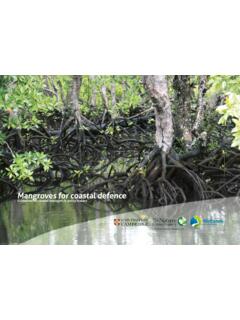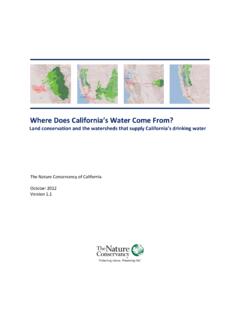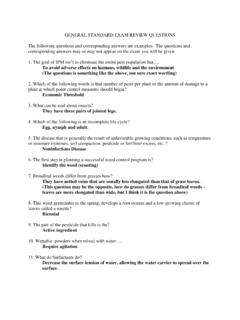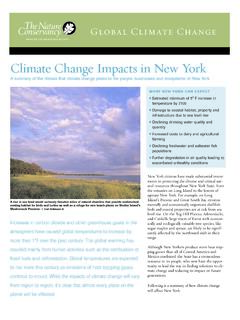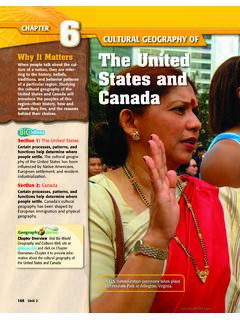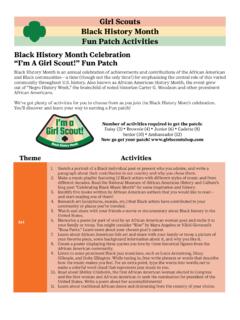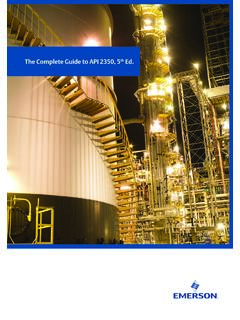Transcription of Rights of Way - APPLICATOR EXAM REVIEW QUESTIONS
1 Rights of Way - APPLICATOR EXAM REVIEW QUESTIONS . The following QUESTIONS and corresponding answers are examples. The QUESTIONS and corresponding answers may or may not appear on the exam you will be given. The actual test is only 50 QUESTIONS . REVIEW these QUESTIONS in addition to the General Standards Exam study guide. 1. Why are plant growth regulators used in right of ways? To maintain desired height of turf around guardrails. 2. What type of herbicide is used for total vegetation control (TVC) used around guardrails? Residual, nonselective herbicides. 3. What is girdling? P 15. Cutting a grove or notch into the trunk of a tree to interrupt the flow of sap between roots and crown. Can be done by cutting a ring around a woody plant through the bark and sapwood (cambium). 4. What is grubbing? P 15. Uprooting plants by pulling or digging. 5. Why are growth regulators used instead of herbicide in some areas? P 15. They are used to slow vegetation growth in areas where brownouts from herbicides are unacceptable.
2 Such as along steep slopes and cemeteries. 6. What growth regulators are used typically and why? P 15. Maleic hyrazide, mefluidide, and flurprimidal. These compounds are used in areas where brownout from herbicides are unacceptable. 7. How do photosynthetic inhibitor herbicides work? P 17. They translocate in the xylem from the roots to the older leaves. 8. What are meristematic tissues? P 19. The growing points of plants. 9. Why are ACCase inhibitors ( lipid biosynthesis inhibitors used)? P 19. They selectively control grass but broadleaf plants are unaffected by them. 10. How are dinitroanilines used to control annual grasses and small-seeded broadleaf plants? P 19. They are soil applied 11. How do herbicide-resistant weeds develop? P 20. Herbicide controls the majority of plants and only those that possess a resistant trait can survive and produce seed for future generations (natural selection). 12. What are the two mechanisms that allow plants to become herbicide resistant?
3 P 20. The target site is somewhat altered and the herbicide molecule cannot exert toxin. The weed is able to metabolize the herbicide or make it inactive. 13. What is frilling? P 24. Series of downward angled cuts make completely around the tree, leaving partially severed bark and wood attached at the bottom. It is typically performed with a hatchet or axe. 14. What steps can be taken to minimize herbicide resistant weeds? P 21. a. Scout regularly to identify resistant weeds b. Rotate herbicides with different sites of action c. Apply herbicides with multiple sites of action d. Combine mechanical and non-chemical control practices e. Clean equipment before moving from infested areas with resistant weeds to non infested areas. f. All of the above 15. What is herbicidal activity? P 23. When a particular herbicide binds to a target site within the plant and exerts a lethal effect. 16. What are the different ways that herbicides can be applied to plants?
4 P 23. Onto leaves (foliar treatment) or onto stem or trunk (frill, girdle, basal-bark or cut- surface treatment. 17. What are the methods of killing standing trees without herbicide? P 24. Frilling and girdling. 18. How is basal bark treatments performed? P 25. Herbicide is sprayed on small trees and shrubs on the lower 12-18 inches of bark. It is most effective on trees smaller than 4-6 inches in diameter. 19. How are soil treatments (basal soil) herbicides used? P 27. They are applied within the dripline of target species so that herbicide can move by rainfall into the root zone. 20. Why are soil treatment herbicides not used in many areas? P 27. They are quite persistent and mobile in water, so can they run off and leech into surface or underground water sources. 21. When is the greatest potential for spray drift? P 28. When wind velocity is greater than 10 miles an hour or when the wind is blowing toward sensitive plants or critical areas.)
5 22. When should you not apply low volume sprays (those having smaller droplet size)? P 28. During periods of high temperature or low humidity. (since droplets evaporate easier). 23. When are cut stump applications of herbicide used? They are used to control trees with thick barks or trunks greater than 5 inches in diameter. 24. How do you avoid the pressure decreasing as the liquid is sprayed from a compressed air sprayer? P 29. Fill the tank only 2/3 full with spray material and repressurize the tank frequently. 25. What are considerations for choosing equipment for right- of way applications? P 29. a) Size of area b) Target vegetation c) Terrain d) Pesticide formulation e) All of above 26. What are the benefits and drawbacks of piston pumps? P 30. They can provide higher spray pressure than diaphragm pumps but cannot be used with abrasive formulations. 27. How are the most effective injections of pesticides performed? P 31. a) At the base of the tree b) Not made into deep folds or creases of the root flare.
6 C) Holes less than diameter made at a depth of to1 spaced every 3 to 6 inches around tree. d) Number of tree holes is determined by diameter of tree at breast height (DBH). e) All of the above 28. Injection equipment is used to put pesticide directly into the plant's? P 30. Living tissue 29. Injections can also be used to treat for? P 30. Treating insect pests and diseases 30. Boom sprayers provide? P. 31. Broadcast applications with the best uniformity. 31. What drawbacks do boomless sprayers have when they are used to make broadcast applications? P31. Uniformity is not as good as with a boom sprayer even when using off-center nozzles. 32. What are spray guns used for with high pressure sprayers? P 31. Spot application, high and low volume foliar application and for basal applications 33. Spray guns are not recommended for? P 32. Broadcast applications, since exact pressure, walking speed, arm motion and nozzle height/ angle must be maintained for uniformity.
7 34. Spray droplets smaller than _____ microns are at risk of drifting? P 33. 200 Microns ( m). 35. How do you calibrate a handheld spray gun? P 32. Spray an area you know to be 1,000 square feet and record the time it takes. Then catch the spray from the spray gun into a bucket for the same length of time. 36. How should sprayers be maintained? P 39. Use only water that appears clean enough to drink Check and clean strainers daily Do not use metal objects for cleaning nozzles Flush new sprayers before use All of the above 37. How do you remove residues of oil base herbicides? P 40. Fill tank to full with a water-ammonia solution (1 quart ammonia to 25 gallons of water), circulate the solution a few minutes, let it sit for at least 6 hours, then pump it through the nozzles. 38. How do you remove wettable powders and amine formulations? P 40. Thoroughly rinse with water-detergent solution (2 pounds of detergent to 30-30 gallons of water), then flush twice with water.
8 39. How do drift control additives work? P 42. They increase viscosity of the spray solution, by polymers and macro molecules 40. What are the properties of an invert emulsion? P 42. When sprayed it forms large uniform water droplets containing herbicide surrounded by a layer of oil reducing the risk of drift. 41. What are the primary reasons for controlling vegetation in along public roads and roadsides? P. 2. To keep motorists safe by providing vegetation free safe shoulders for emergency stops, a clear zone for vehicles leaving the road and good visibility. 42. What areas require total vegetation control (TVC)? P 3. a) Near transformer stations and substations. b) Pipleine pumping stations and storage tanks. c) On railroad ballasts and berms. d) All of the above 43. Why should the soil beneath telephone and electric power lines not be left bare and is typically planted with perennial grasses? P 3. To provide erosion control, support maintenance equipment and compete with tall or vining brush.
9 44. Can a licensed Right of way APPLICATOR apply herbicide along drainage systems, levees and riprap around aquatic areas? As long as treatment is not made directly onto water or vegetation standing in water (can be treated when no water is there). 45. How can you tell the difference between a grass and sedges and rushes? P 8. When looked at from above leaves come out of 2 sides for grasses and from 3 sides for sedges and rushes. 46. Which weeds have been declared noxious and required to be controlled by Illinois Law? P 13. Common ragweed, giant ragweed, marijuana, musk thistle, Canada thistle, johnsongrass, perennial sowthistle, sorghum-almum, and kudzu 47. Which weeds have been designated as exotic and unlawful to buy, sell, offer for sale, distribute or plant? P 13. Japanese honeysuckle, multiflora rose, purple loosestrife, common buckthorn, glossy buckthorn, saw-toothed buckthorn, dahurian buckthorn, Japanese buckthorn, Chinese buckthorn and kudzu 48.
10 What is the principle mechanical treatment for the control of growth and reproduction of most plants along roadsides and highways? P 14. Mowing 49. Which type photosynthetic inhibitor herbicides are typically soil applied? P17 or table on P. 18. Triazines, ureas and uracils. 50. How do growth hormone herbicides work? They mimic different growth-regulating compounds in the plant and may cause a variety of growth abnormalities. 51. What areas of the stump need to be treated with water-soluble herbicides? P 26. The sapwood and bark of the stump's cut surface. 52. When is stump treatment with water-soluble herbicides needed to be performed after cutting a tree or vine? P 26. Immediately after cutting the tree or vine in order to be effective. 53. What areas of the stump need to be treated with oil-carried herbicides? P 26. The entire stump. 54. When is stump treatment with oil carried herbicides needed to be performed after cutting a tree or vine?




